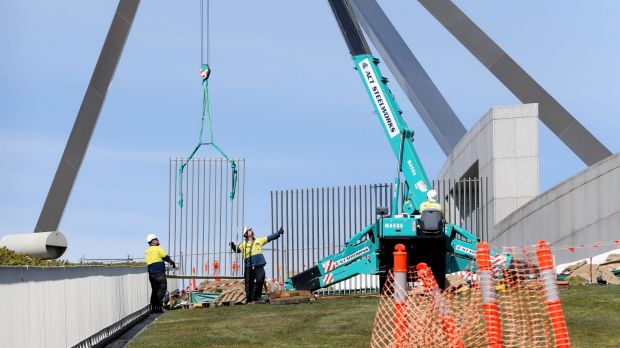THERE’S been a public outcry over the ongoing security upgrade at Parliament House in Canberra, as layered fencing is installed to protect the site from terror attacks of the sort seen in Canada in 2014 and the UK in 2017.
Protest came this week as gardens and trees were removed to make way for the primary 2600mm steel barrier, which is currently being installed to create a classic deter, detect, delay, respond ‘onion skin’ to defend what has long been a fundamentally public-facing site.
The completed perimeter will have 2 lines of steel fencing on the building’s 4 grass ramps variously 2600mm, 1500mm and 1200mm high. The perimeter upgrade is part of a $A126 million package of works designed to protect Australia’s Parliament House, which was originally designed to allow visitors to symbolically walk on top of the structure and the politicians within.
As well as enhanced fencing, the completed security solution will incorporate landscaping and planter beds, vehicle and pedestrian access control and an expansion of the surveillance solution out to the perimeter using 38 dual thermal and optical cameras allowing the creation of a thermal fence.
Thermal technology offers precision detection of intrusion attempts at long distances in all weathers and lighting conditions, facilitating early response by emergency and special services personnel stationed in and around the Parliament House precinct.

The upgrade will include pedestrian management using security turnstiles on 4 landings, as well as vehicle control through a combination of automated bollards supported by a 2600mm motorised sliding security gates with an additional row of automated bollards forming a holding zone external to the Parliament House carpark. At the same time, access control is also being enhanced for MPs offices and the building’s ministerial wing.
News reports suggest an audit of all CCTV cabling has been attached to the upgrade contracts, along with upgrades to IT networks supporting the security system and expanded intrusion detection capability. LPR will also be deployed at the site, along with integrated ticketing design and electronic car park management system. The completed electronic security systems will be supported by a centralised security management system.♦












